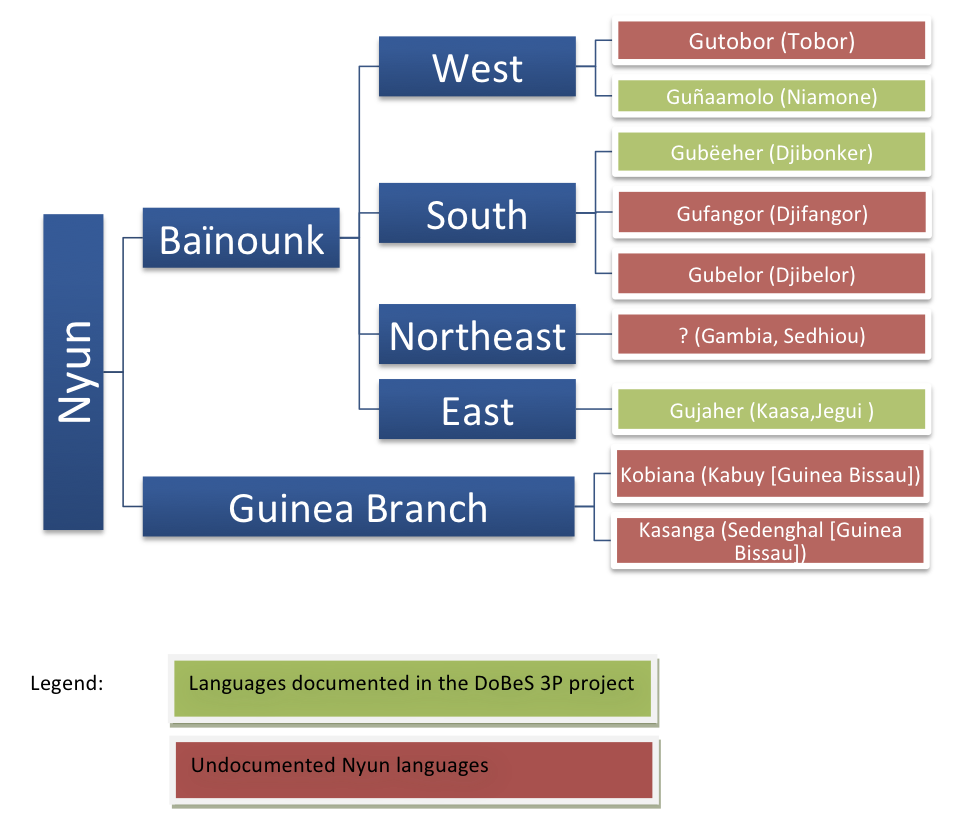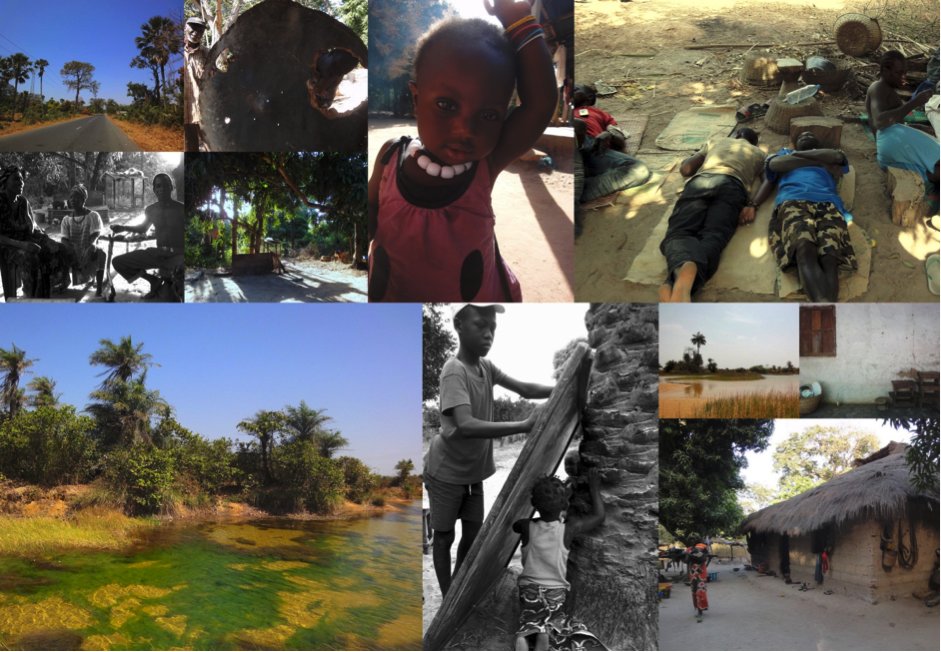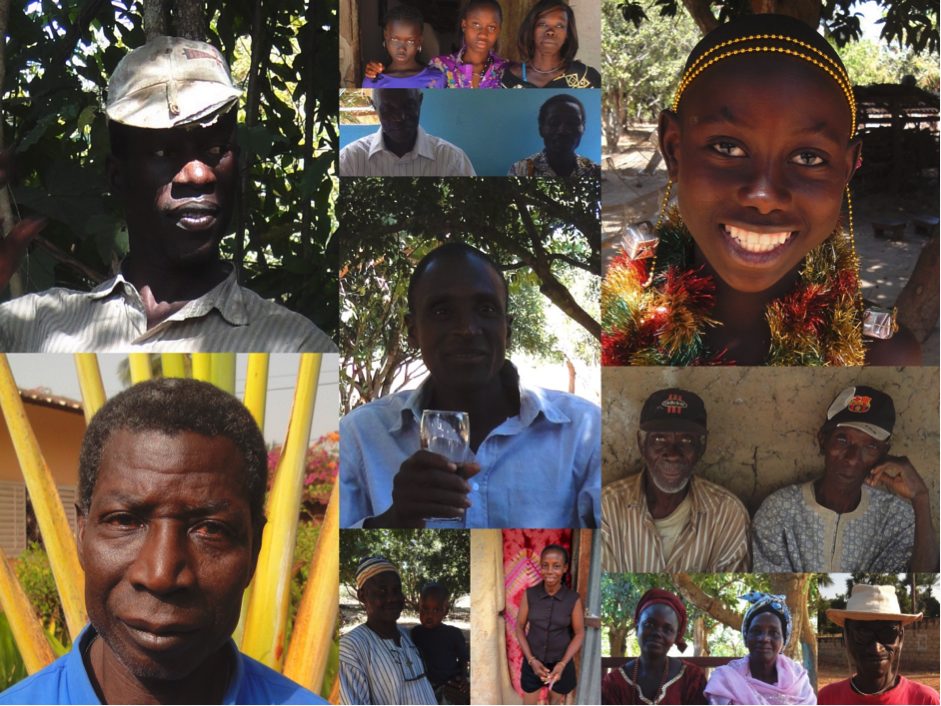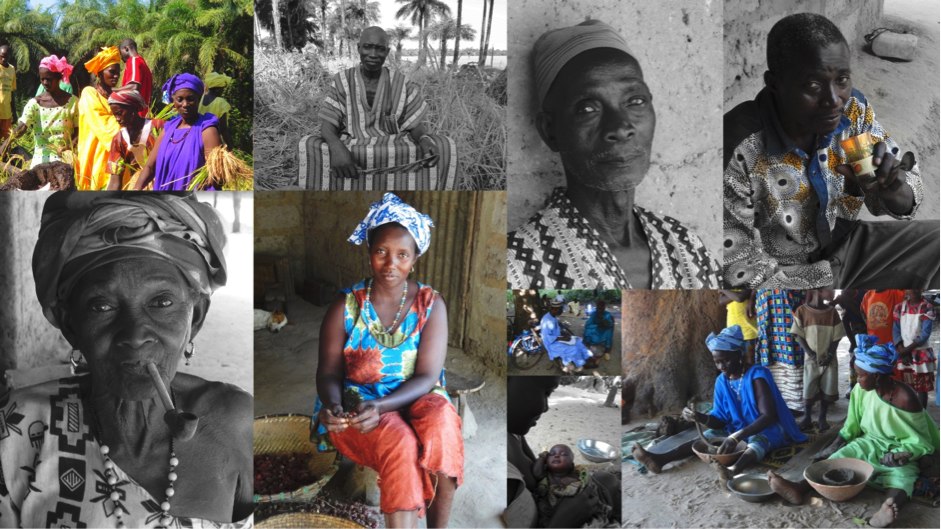The Baïnounk languages are a cluster of endangered language spoken in the Casamance area of Senegal (West Africa). Today, three main varieties of Baïnounk are spoken in Senegal and the neighbouring country Guinea Bissau. The label Baïnounk reunites people speaking these languages, people who feel that part of their cultural identity is Baïnounk, and a group of people (speaking Kobiana/Kasanga) who have privileged relationships with Baïnounk-speaking groups. The languages are closely related, but they have many differences in basic vocabulary and grammatical structure, and speakers of the different languages cannot understand each other’s Baïnounk variety.
The following graph illustrates the relationships between Baïnounk languages:

The few remaining Baïnounk-speaking communities in Senegal are affected by a long‐term violent conflict and by the consequences of climate change. These two factors result in growing migration to cities and in drastic changes in the way of life of the remaining rural population.
Our project focuses on three Baïnounk languages:
Baïnounk Gubëeher – literally: ‘the language of Djibonker’ (called Jibëeher in Gubëeher) – is the smallest of the major Baïnounk languages. It is spoken in the village of Djibonker, 13km to the west of the regional capital Ziguinchor, on the road to Cape Skirring. There, about 700 people speak this Baïnounk language. About 400 speakers live in the diaspora in Dakar, the country’s capital, but there, not many domains for the use of Gubëeher remain.

Impressions from Djibonker © Alexander Cobbinah 2011

People of Djibonker © Alexander Cobbinah 2011
Baïnounk Guñaamolo (‘the language of Niamone (Ñaamol)’ is spoken in the rural community Niamone, in a number of villages (“quartiers”). Niamone is situated ca. 30km to the north of Ziguinchor in the vicinity of Bignona. This Baïnounk language has several thousand speakers, both in Casamance and in the diaspora. It is the language of the cluster that has received the most linguistic attention to date. Serge Sauveageot, a French linguist, worked on Guñaamolo in the 1960s and 1970s, and for almost 40 years, American missionaries of the New Tribes Mission were present in Niamone. They devised a literacy programme and, together with the Baïnounk association BOREPAB, were involved in the codification of Baïnounk in 2005. The Senegalese linguist Sokhna Bao-Diop (CNRS-LLACAN Paris and UCAD Dakar) also works on Guñaamolo.

Impressions from Niamone © Friederike Lüpke 2008

People of Niamone © Friederike Lüpke 2008
Baïnounk Gujaher (without a clear reference to a location in the language name) is the third major Baïnounk language. Its speakers occupy a large territory to the east of Ziguinchor, stretching southwards into neighbouring Guinea Bissau. This area was deeply affected by the longstanding civil war, during which a number of villages were abandoned, and in consequence, many speakers of Gujaher live in Ziguinchor and Dakar today. Some aspects of Gujaher morphosyntax have been described by the linguist Jean Doneux, who wrote a comparative study of Gujaher and Kobiana. Among the Gujaher-speaking villages, our project has chosen Agnack Grand and Agnack Petit as its main field sites, but we work with speakers from other locations as well and visit other villages for documentation activities.

Impressions from Agnack © Friederike Lüpke 2010, 2011

People of Agnack & Gounom © Friederike Lüpke 2010, 2011


